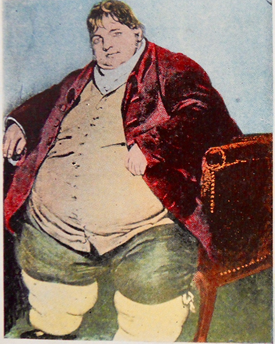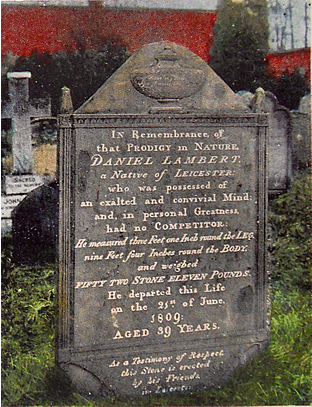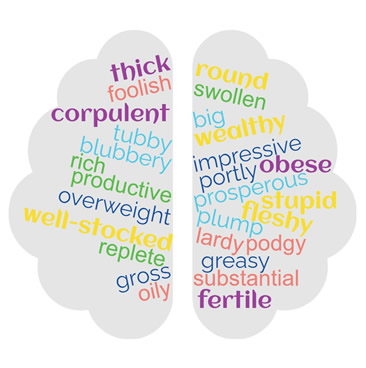Fat and social identity
Body fat represents an explicit link between consumerism and social perceptions of body shapes.
The stereotypes and connotations of our body size are often directly related to social status. In the Industrial period amongst males, fat could be seen as representing their wealth and power, a fat body being a symbol of having the wealth to consume excess. Fat wasn’t then seen as a negative attribute but a positive one, despite the health problems that came with it. Fat could be beautiful but also symbolise greed.

Daniel Lambert
For others, supersized bodies were a source of great curiosity. Daniel Lambert (1770-1809) was recorded as the heaviest person ever in 1805, by which point he weighed 50 stone. Daniel was actually a very fit and active person but he continued to gain weight throughout his adulthood until he was no longer able to work or perform his usual sporting activities. Having found himself no longer employable due to his size and being sensitive about his body size, he shunned social activities and became a recluse.
Poverty left Daniel no option but to earn money by exhibiting himself as a spectacle and he moved to Piccadilly, London in April 1806. Wealthy tourists flocked and paid good money to see Daniel.

Daniel Lambert grave
After 6 months, he moved back to his home town of Leicester, although he continued to do shorter tours to earn cash. He died suddenly in Stamford, Lincolnshire, where he was buried in St. Martin’s churchyard, requiring 20 men to move his coffin. He is said to remain one of Leicester’s ‘most cherished icons’ and there is an annual Daniel Lambert day on the day of his birthday, 13 March.
Very often, perceptions of body size were not so positively evaluated and were tied to contemporary concepts of morality. Lombroso in 1898 remarked that the loose morals of prostitutes was manifest ‘by the notorious fact of the obesity of those who grow old in their vile trade and who gradually become positive monsters of adipose tissue’. This is a very obvious example of what we now call ‘fat-shaming’. We have a long history of having a fascination with body shapes but our attitudes towards what we think of as 'desirable' bodies have changed over time.
How we perceive body size reflects the perceptions that we have about the social attributes and behaviours we might ascribe to a social status or ‘type of person’. Looking at words associated with the term ‘fat’ is quite revealing about our social attitudes towards it. What are the words that come to mind when you think of ‘fat’? Are they positive or negative?
Fat-shaming is not a new thing but is certainly negative and unhelpful. Can looking at changing attitudes to body fat and wider patterns of consumerism help us to tackle these negative attitudes? How do we balance negative social attitudes towards fat and the recognition that fat is bad for our health?
Another wider issue about fat as a foodstuff today that needs consideration is its ever increasingly popular consumption and the environmental impact.









